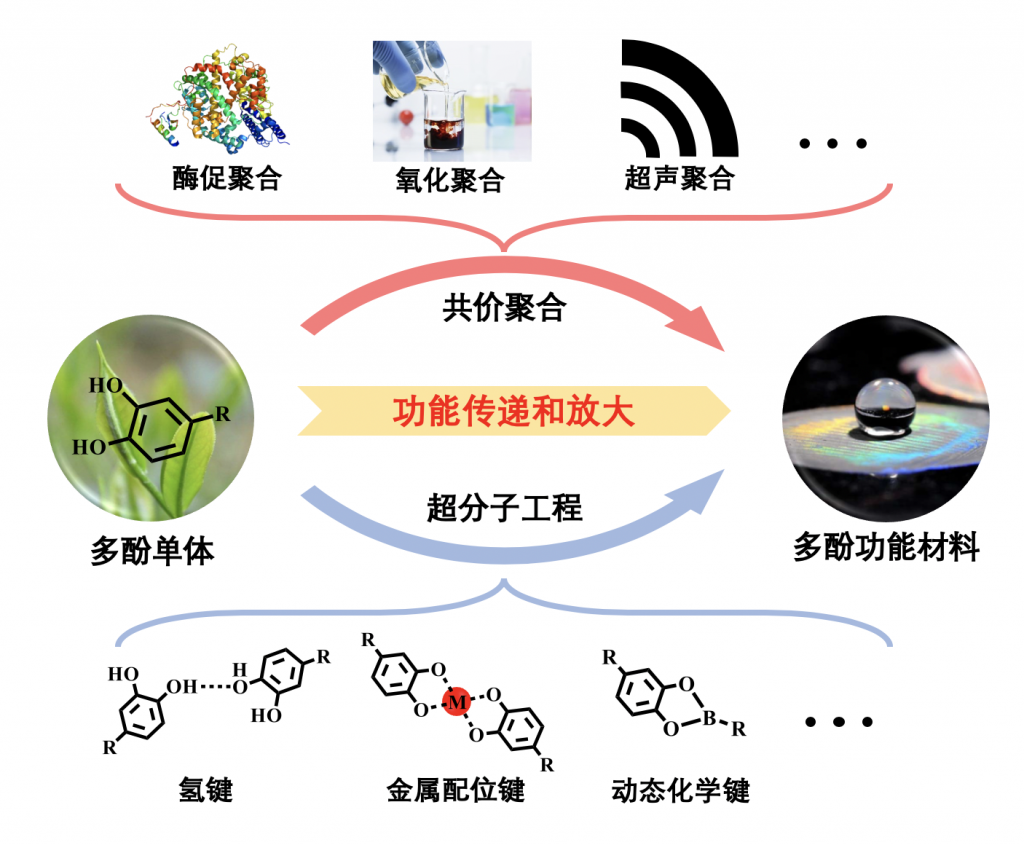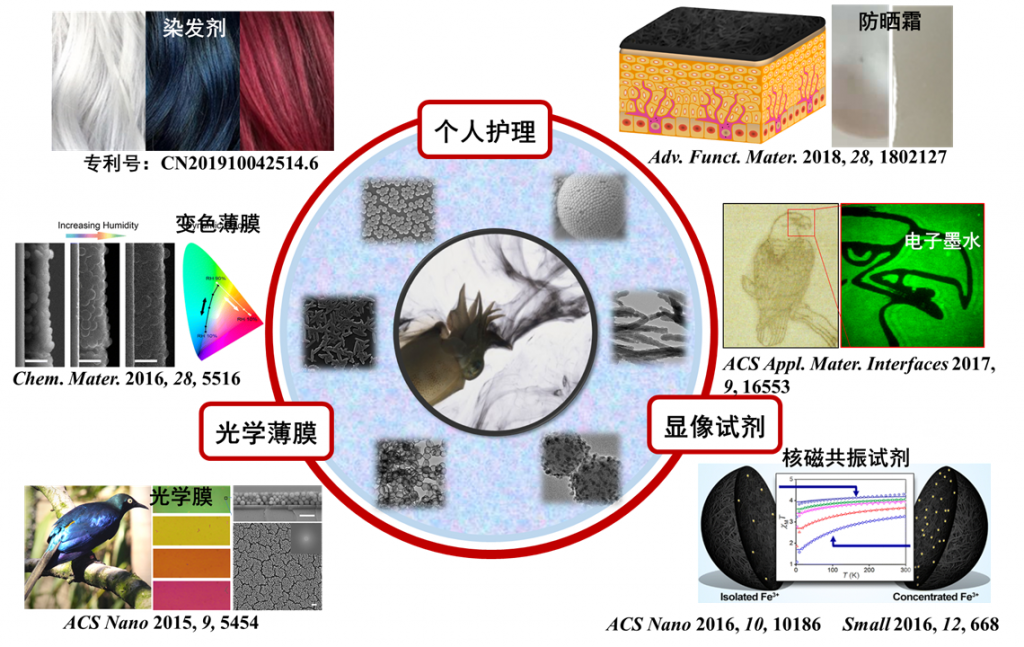1. Polyphenol material chemistry
Polyphenolic compounds generally refer to biomolecules containing two or more phenolic hydroxyl groups, the structure of which often possesses one or more catechol/pyrogallol motifs. At present, more than 8,000 polyphenols have been isolated and identified. Their typical representation in nature is the regulation of plant polyphenols and the physiological processes of plants widely found in the skin, roots, leaves and fruits of plants. Signal molecules and metabolites having a catechol structure. We hope to develop and optimize controllable polymerization process conditions (such as enzymatic polymerization, oxidative polymerization, ultrasonic polymerization, etc.) on the one hand, and to collect various non-covalent and reversible bonds (such as hydrogen bonds, dynamic chemical bonds) by supramolecular engineering methods. , metal coordination bonds, etc., in various dimensions to regulate the structural morphology and physicochemical properties of the target polyphenolic functional materials, to achieve the correct function of polyphenol monomer molecular function to synthetic polyphenol materials in space, time and energy scale Pass and zoom in.


2. Artificial melanin material
Melanin is an important class of biopolymers, which are widely found in the skin and hair of humans and animals, and play a central role in many physiological activities. Inspired by the intracellular biosynthesis process of melanin, we have achieved semi-automated synthesis of artificial melanin materials with similar chemical composition, physical structure and material properties by controlled oxidation polymerization, which is used to gradually replace some of the high blackness and high refractive index. The traditional polymer materials, and further developed the basic research and commercialization of the characteristics of downstream products.